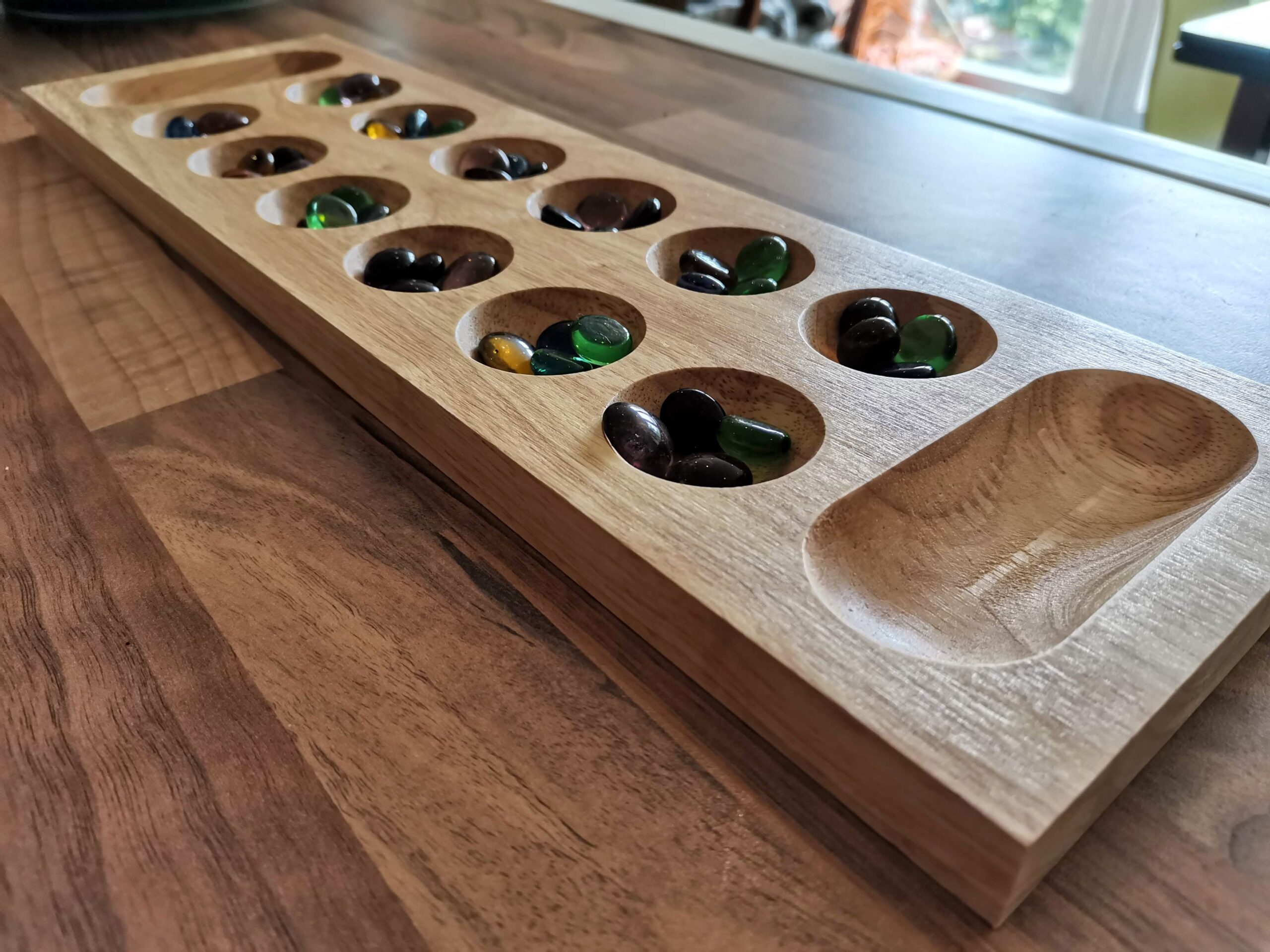Ynaros Fallin’ Preview

Rival Shamans face off across a magical land, a magical land which is conveniently made of hexagons. Your aim: to become the most powerful Shaman the land has ever seen. Harnessing the powers of the crystals and the magic land tiles to not only control the landscape, but even control your opponent! There’s a glut of games out there with fantastical worlds, each with a rich, convoluted history spun from the mind of the writer, but Ynaros Fallin’ isn’t one of them. It makes no attempt to give any background, no names that look like someone swearing in Welsh – none of that. And you know what? I respect it all the more for it. Stomp all over the land, beat the snot out of one another, and then put it all back in the box for another day. Ideal.
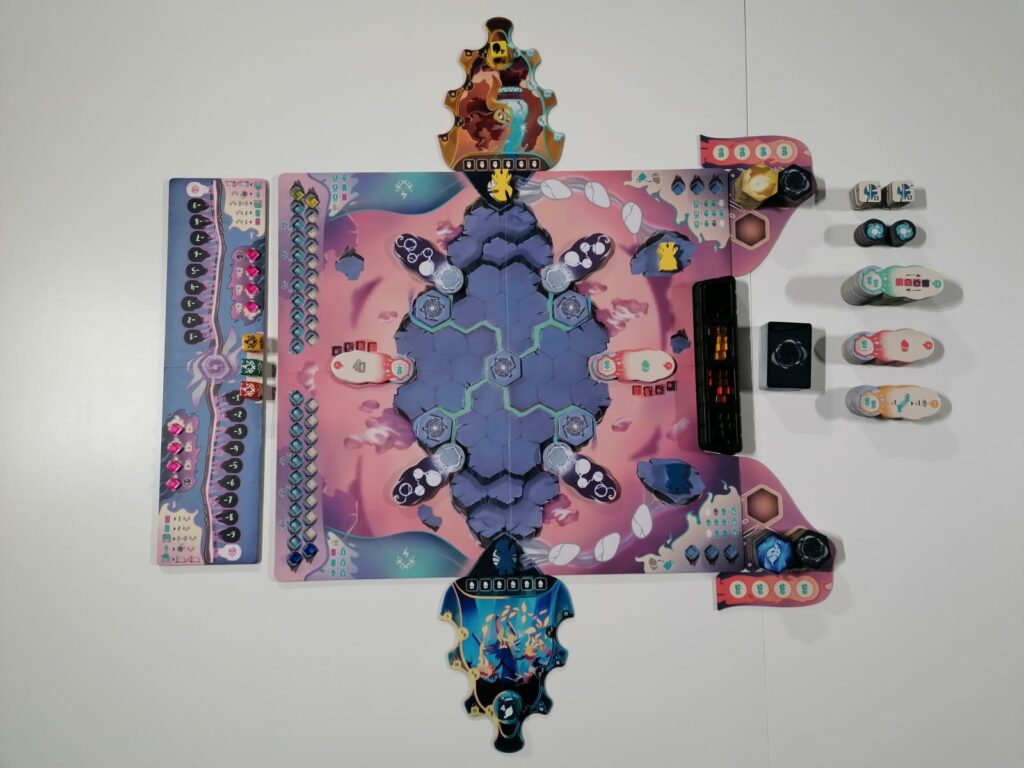
We are phorever people
Ynaros Fallin’ gameplay is concentrated around three main concepts. Controlling land tiles, moving around those tiles, and combat once you’re in range of a rival shaman who needs a good ol’ duffing-up. Most of this is determined by the shadow cards you hold in your hand, which act as a sort of two-colour currency. The yellow player wants to put down yellow tiles to move their yellow shaman and followers around on, and vice-versa for the blue player. Note that the coloured tiles are only used in the Standard rules game. It makes for a really clever way of controlling the landscape and flow of the game. You can move through an opponent’s colour tile, but it’s going to cost you more movement points. Is it really worth it? Is there a better option? You’ll catch yourself asking yourself questions like this constantly.
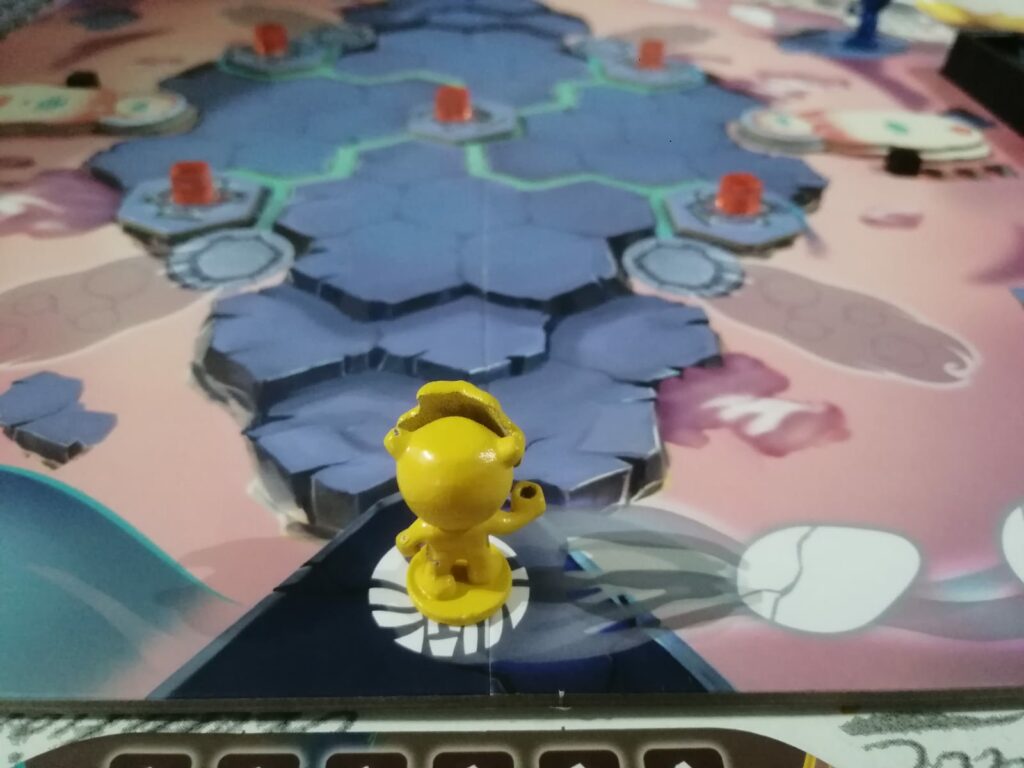
It’s probably a good point to touch on the different game modes now. The rulebook walks you through the setup and rules of play for what it refers to as the Novice game, where some of the mechanisms are different. You don’t need to place the tiles to walk on, for instance, which is one less thing to worry about. It’s a really cool thing to do because, despite the simplistic look of the pieces and actions, there’s actually quite a lot going on, on a tactical level. Getting used to moving, attacking, and gathering land tiles for your player boards is heavy going if you’re not used to the style of the game. Introducing new players to a game with a simplified version, before going for the full-fat version is a great way to lower the barrier to entry, or to simply enjoy it with people who don’t enjoy deeper games.
Combat follows a similar formula to movement, with players playing cards from their hands with varying power levels, depending on which colours they play. In fact, you even get bonuses to your attack when you put a card horizontally across the top of two vertically played cards, which results in this Stone Henge effect. It feels pretty apt in a game with Shamans flouncing about the place, collecting and using crystals.
Boss drum, in control again
Dodgeball was never really a thing for me when I was at school, but I knew about it from TV and films. The start of a game of Ynaros Fallin’ is like the start of a game of dodgeball, with the really juicy goodies near the centre line, and an implied sense of urgency to get out there and claim them ASAP. In fact, the layout of the board as a whole is really clever. The single hex that each Shaman steps out onto (the Hearth) fans out to cover the width of the land at the middle and then funnels back down towards the opposite hearth.
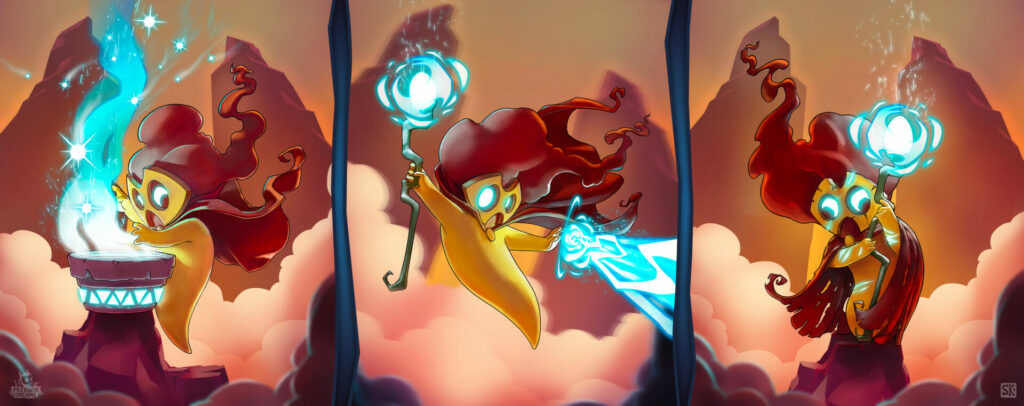
In most of the player-vs-player games I’ve played, there’s usually some kind of safe zone for each player to bring their units out onto the board. Not so in Ynaros Fallin’. Every hex is fair game when it comes to where you want to move. As a matter of fact, getting your dude to the opponent’s hearth lets you get a new follower into the game, for you to move about and do stuff with, or upgrade a follower into another Shaman! It’s quite an unusual feeling to push your own character so close to your opponent’s base, especially with it bottlenecking the way it does, and a lot of that comes from the concept of Control in the game.
Control’s a really interesting idea. If you can trace a straight line to the other player’s character, you can spend the magic crystals you collect to do various things, like activating some of the player powers they’ve collected for their side. I really like the Control mechanism, because it adds another layer to the board. Not a physical layer, but another layer of observation you’ve got to be aware of. It’s not enough to know where you are, and where you can move to, you have to be aware of the line of sight from you to your enemy.
Onward, ever ever on, Destination Eschaton
I’ve had the prototype of Ynaros Fallin’ with me for long enough to see two full rulebook revisions, which has been great. The people behind the game are still actively working on it, taking feedback and acting on it. It means the game I first played isn’t the same game I’m playing now, and probably not the same game you’ll play when it lands on your doorstep. The changes have all been for the better, creating a streamlined, easy-to-learn game, which is a lot of fun to play.
I’ve barely even touched on the Magic Land tiles you collect from the board, which attach to your player board and give you different one-time or ongoing bonuses. It’s another layer which doesn’t overcomplicate things but subtly alters your choices and strategy. Similarly, I haven’t talked about the clever way the dice work. Having a 6 on the top face of your die means you have six movement points, for instance, but when you’ve moved you just rotate that die down by one, so it becomes a 5. Charging that die value up costs cards and one of your two actions, but reaps long-term benefits. The card-driven play with two actions per turn reminds me of games like Brass: Birmingham, even though the they’re nothing alike.
The components, even in the prototype I’ve been playing with, are gorgeous. I’m used to double-layered player boards as an extravagance, but a dual-layer main board? Not since Polis have I had that pleasure, and I’ve gotta tell you, it feels really nice to play with. It’s small details like this that new games from new publishers need in order to stand out from the crowd in these days of crowdfunding campaigns. I will say that while Ynaros Fallin’ can be played by three or four players, with two players is where it’s best.
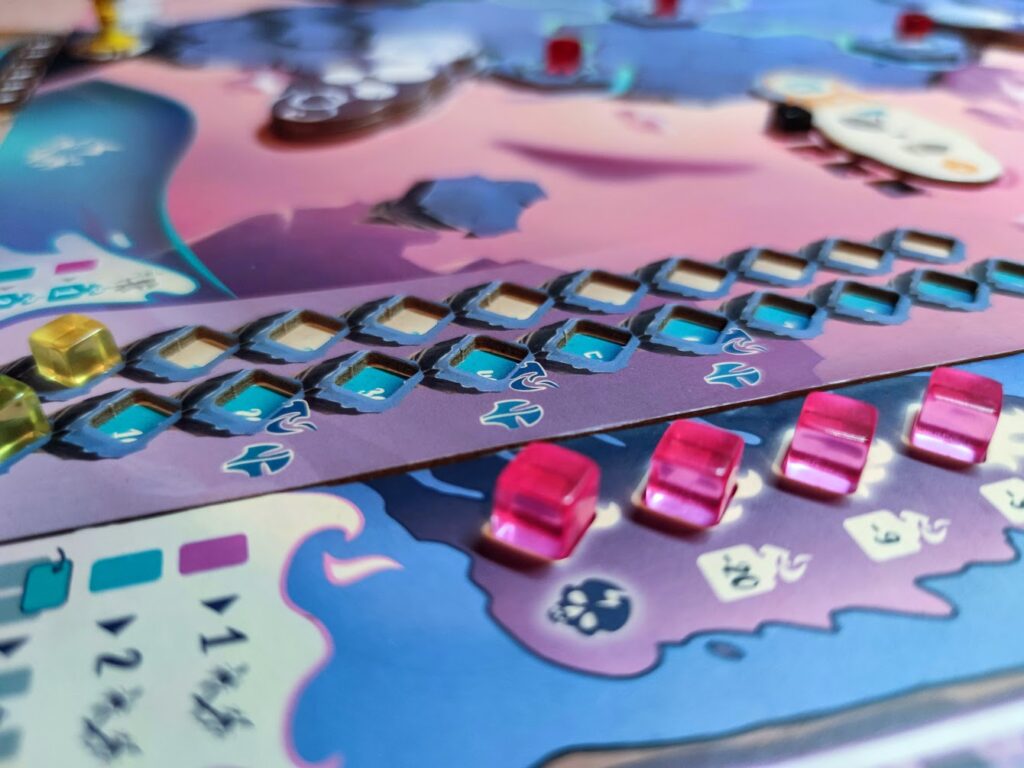
If you’re a fan of straight-up duelling games, keep an eye out for Ynaros Fallin’. The people behind it have put together a really clever, easy-to-learn, and highly engaging game which I’ve really enjoyed.
Prototype copy provided by Peekwik Dreams. Thoughts and opinions are my own. All components, artwork, and rules subject to change before fulfilment. Sorry about all the Shamen lyrics too, it got stuck in my head.
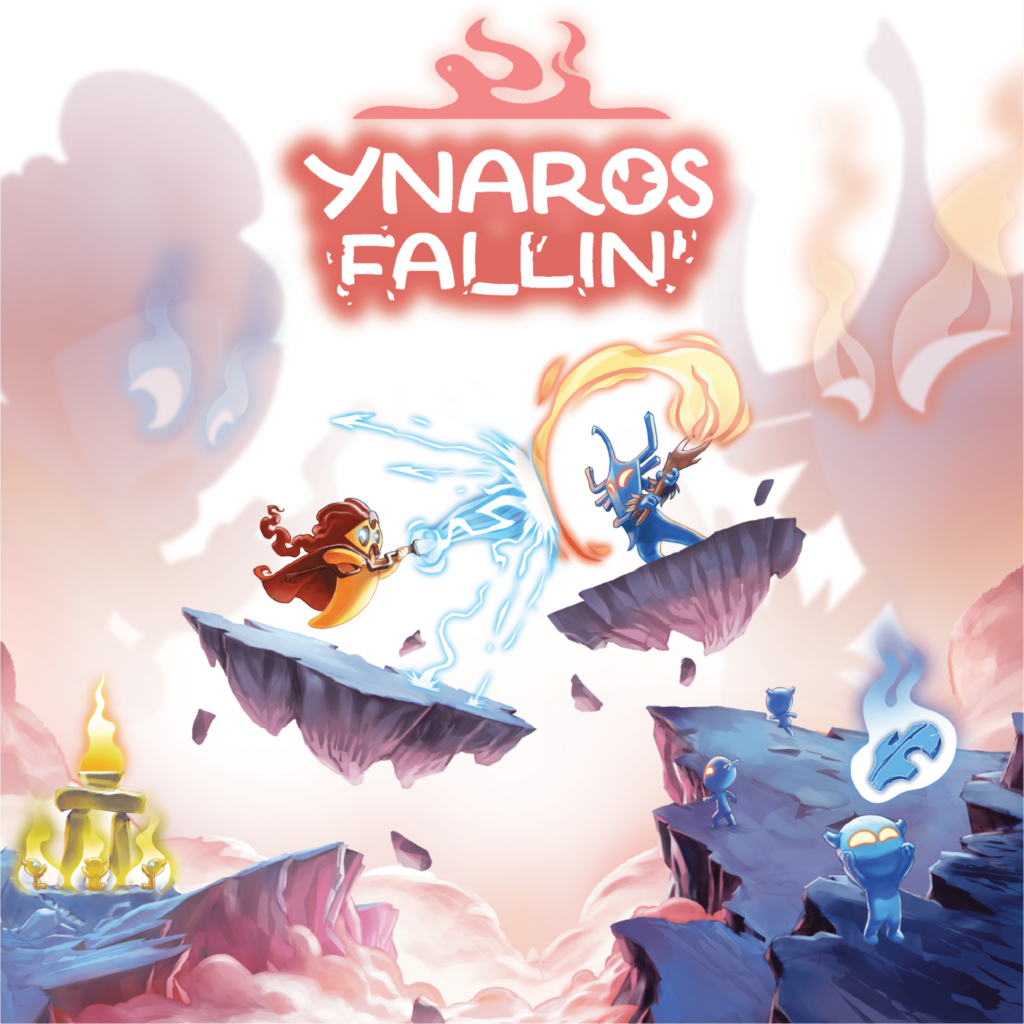
Ynaros Fallin’ (2023)
Designers: Luca Sanfilippo, Ugo Tomasello
Publisher: Peekwik Dreams
Art: Swan Keller, Ugo Tomasello
Players: 1-4
Playing time: 45-60 mins









